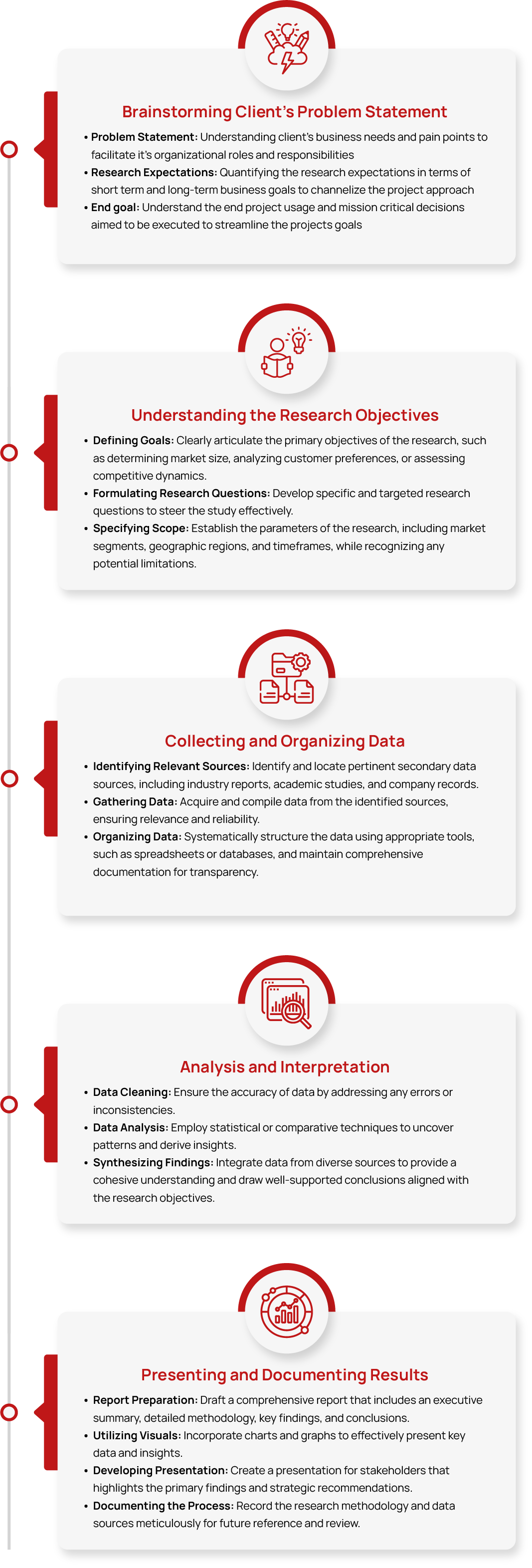Magnetic Resonance Imaging (MRI) Systems Market Size, Share, Growth and Trend Analysis Report, 2032
- Summary
- Market Landscape
- Methodology
- Table of Content
Magnetic Resonance Imaging Systems Market Size, Share & Growth and Trend Analysis Report, By Architecture (Open, Closed), By Field Strength (Low-to-mid (1.5T, 3T), High & ultra-high (>4T)), By Application (Neuro, Spinal, Pelvic, Breast, Cardiology and Others), By End User (Hospitals, ASCs) and By Region (Asia Pacific, Europe, North America, Latin America and Middle East & Africa) and Forecasts 2025 – 2032.
Magnetic Resonance Imaging (MRI) is a non-invasive medical imaging technique that uses powerful magnets and radio waves to generate detailed images of organs and tissues inside the body. It helps in diagnosing various conditions, including brain disorders, tumours, and joint injuries.
The Magnetic Resonance Imaging (MRI) Systems Market was valued at approximately USD 8 billion in 2024. It is projected to grow to USD XX billion by 2032, with a compound annual growth rate (CAGR) of XX% from 2025 to 2032.
Industry Trends
Magnetic Resonance Imaging (MRI) technology continues to evolve with advancements in imaging quality, enabling more precise diagnosis and monitoring of a wide range of medical conditions.
The trend towards incorporating AI and machine learning in MRI systems is enhancing workflow efficiency and improving diagnostic accuracy.
The global MRI systems market is steadily growing, fueled by rising demand for diagnostic imaging in healthcare.
Low-to-mid field MRI systems, especially 1.5T and 3T models, are gaining popularity for their cost-effectiveness and ability to provide detailed imaging.
Technological advancements, including improved imaging techniques and AI-driven analysis, are enhancing diagnostic accuracy and patient care.
These innovations are also reducing scan times and improving workflow efficiency. Sustainability and cost-effectiveness are key drivers, with a focus on energy-efficient systems and eco-friendly materials.
However, the Magnetic Resonance Imaging (MRI) technology market faces challenges such as high installation and maintenance costs, which limit accessibility in developing regions.
Additionally, long scan times and patient discomfort can affect adoption, while the need for strong electromagnetic shielding increases operational complexities.
Moreover, a shortage of skilled radiologists and regulatory hurdles further restrain market expansion.
Industry Expert’s Opinion
- Dr Ugumba Kwikima, Neuroradiologist, Lugalo General Military Hospital, Tanzania
“There is rising demand for MRI in Africa because of its importance in managing non communicable diseases. There is an increasingly aging population as well as increasing urbanisation, and behavioural trends have been changing, for example in the use of tobacco and alcohol.”
TT Consultants’ Perspective
The Magnetic Resonance Imaging (MRI) market is evolving rapidly, driven by advancements in AI-powered imaging, faster scan times, and the increasing adoption of low-to-mid field strength (1.5T and 3T) MRI systems.
Rising cases of neurological, spinal, and cardiovascular disorders, along with growing investments in healthcare infrastructure, are fueling demand.
The Asia-Pacific region is emerging as a key market, supported by expanding diagnostic capabilities, while North America and Europe lead in adopting cutting-edge imaging solutions.
With a strong focus on precision diagnostics, the industry is shifting towards more patient-friendly MRI systems, including open MRI designs and sustainable imaging solutions.
Regulatory advancements and strategic research collaborations are further accelerating market growth.
As healthcare providers seek faster, more accurate, and cost-effective imaging, the MRI market is set for steady expansion, driven by technological innovation and evolving clinical needs.
Market Segmentation
1. By Architecture (Open, Closed)
The Closed MRI segment dominated the magnetic resonance imaging (MRI) systems market in 2024, accounting for a significant revenue share of XX%.
This segment's dominance is attributed to the superior image quality provided by closed MRI systems, which offer higher field strength and enhanced resolution, making them ideal for a wide range of clinical applications.
Closed MRI systems are preferred in hospitals and diagnostic centers for their ability to provide precise imaging for various conditions, including neurological, musculoskeletal, and cardiovascular disorders.
However, the Open MRI segment is gaining traction, particularly for patients who experience claustrophobia or discomfort in the closed system.
Open MRI systems are designed to offer a more comfortable and accessible experience while still providing reliable diagnostic capabilities.
Though the Open MRI segment is smaller in comparison, it is expected to experience growth due to increasing patient preference for a less confined imaging experience, particularly in outpatient and specialized settings.
Overall, while the Closed MRI segment leads, the Open MRI market is expected to expand as patient-centric solutions continue to gain popularity.
2. By Field Strength ((Low (<1.5T), Mid (1.5T, 3T), High & Ultra-high (>4T))
The mid-field strength segment dominated the magnetic resonance imaging (MRI) systems market in 2024, holding a significant share of XX%, and is expected to experience substantial growth in the coming years.
MRI systems with mid-field strength, typically 1.5T and 3T, are preferred for their ability to deliver high-precision imaging while being more cost-effective compared to high-field systems.
These machines offer a balance between performance and affordability, making them widely adopted by healthcare providers globally.
The high-field segment is projected to grow at the fastest rate of XX% during the forecast period, driven by advancements in imaging technology and increasing demand for detailed diagnostic capabilities.
Research studies continue to explore the effectiveness of high-field MRI machines in a variety of clinical applications, with hospitals and research centers increasingly deploying these advanced systems to enhance diagnostic accuracy.
As healthcare providers seek more precise and efficient imaging solutions, the integration of higher field strength MRI machines is expected to rise, pushing the boundaries of medical imaging.
3. By Application (Neuro, Spinal, Pelvic, Breast, Cardiology and Others)
The Neuro imaging segment is expected to dominate the magnetic resonance imaging (MRI) systems market in 2024, holding a significant revenue share of XX%.
This dominance is driven by the growing demand for brain and neurological imaging, which is crucial for diagnosing conditions such as brain tumors, stroke, epilepsy, and neurodegenerative diseases.
MRI provides exceptional imaging precision, making it essential for accurate diagnosis and treatment planning in neurological disorders.
The Spinal and Pelvic imaging segments also contribute notably to the market, driven by the increasing prevalence of spinal disorders and pelvic conditions, including musculoskeletal and gynecological issues.
The Cardiology segment is witnessing rapid growth, fueled by advances in cardiac MRI technologies that offer enhanced visualization of heart tissues and the ability to detect cardiovascular diseases.
Although the “Others” segment, which includes breast imaging and other specialized applications, is expanding, it remains a smaller contributor compared to neuroimaging.
Overall, the MRI market is evolving with a growing focus on neuro and cardiac applications, supported by ongoing advancements in imaging technology.
Competitive Scenario
The Magnetic Resonance Imaging (MRI) market is primarily dominated by a few key players, including GE Healthcare, Siemens Healthineers, Koninklijke Philips N.V., Canon Medical Systems, Hitachi Healthcare, Hologic Inc., Bruker Corp., Esaote SPA, Fujifilm Holdings Corp., Shimadzu Corp., and Aurora Imaging Technologies, Inc. Together, GE Healthcare, Siemens Healthineers, Koninklijke Philips N.V., and Toshiba Medical Systems Corporation hold approximately XX% of the MRI market share.
These leading companies are continuously employing strategies such as product launches, regulatory approvals, partnerships, collaborations, and market expansions to strengthen their position.
For example, in November 2023, GE Healthcare entered into a 10-year partnership with the University of Wisconsin School of Medicine and Public Health at UW-Madison.
Recent Developments and Strategic Activities:
- In September 2024, Tiruchi SRM Medical College Hospital and Research Centre launched an advanced Magnetic Resonance Imaging (MRI) scanner at its facility on Friday. The 3 Tesla MRI scanner will facilitate early and accurate detection of various medical conditions, thereby enhancing treatment outcomes, according to a press release.
- In May 2024, Chennai-based Fischer Medical Ventures (FMVL) has manufactured India’s first domestically produced MRI systems, reducing reliance on imports. The company plans to expand through acquisitions and investments in CT scanners, AI-powered X-ray equipment, and teleradiology solutions to enhance diagnostic healthcare offerings.
- In October 2023, Siemens Healthineers joined forces with Cardiff University to advance cutting-edge medical technologies, focusing on in vitro diagnostics and imaging. This collaboration builds on their decade-long partnership in clinical laboratory diagnostics and aims to enhance research in imaging and precision diagnostics. The Cardiff University Brain Research Imaging Centre (CUBRIC) serves as the heart of the collaboration, combining Siemens Healthineers’ magnetic resonance (MR) technology with Cardiff’s expertise in brain mapping and clinical innovation.
- In September 2023, Polarean Imaging plc formed a partnership with VIDA Diagnostics to enhance the Polarean xenon 129 MRI platform, further supporting its clinical and research applications.

Please fill out the form to request the ToC and gain access to detailed insights in the report.
Request Table of Contents







